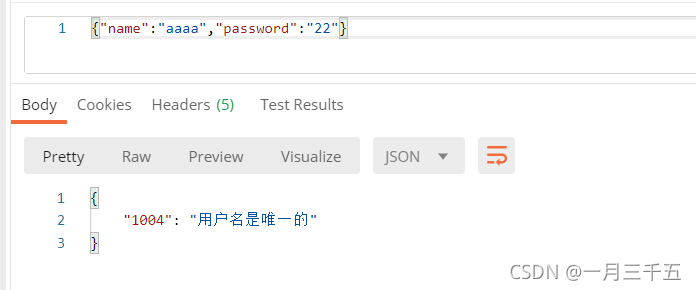自定義一個唯一字段校驗器
注解
|
1
2
3
4
5
6
7
8
9
10
11
12
13
|
@Target({ElementType.FIELD})@Retention(RetentionPolicy.RUNTIME)@Documented@Constraint(validatedBy = {IsUniqueValidator.class}) // 指定自定義的校驗器public @interface IsUnique { // 提示信息 String message() default ""; // 不加這倆參數(shù) error msg: contains Constraint annotation, but does not contain a groups parameter. // 必須包含這兩個參數(shù) Class<?>[] groups() default {}; Class<? extends Payload>[] payload() default {}; // -----} |
校驗器
|
1
2
3
4
5
6
7
8
9
10
11
12
13
14
15
16
|
public class IsUniqueValidator implements ConstraintValidator<IsUnique, String> { @Override public void initialize(IsUnique constraintAnnotation) { } /** * 通過該方法,對參數(shù)進行驗證,看是否通過。 * @param value 修飾字段的值。 * @param context 上下文 * @return true:驗證通過。 false:驗證不通過。 */ @Override public boolean isValid(String value, ConstraintValidatorContext context) { // 模擬數(shù)據(jù)庫判斷是否存在改用戶名 return !"aaaa".equals(value); }} |
異常處理
|
1
2
3
4
5
6
7
8
9
10
11
12
13
14
15
16
17
|
@ControllerAdvice@ResponseBodypublic class ValidatorExceptionHandler { @ExceptionHandler(value = BindException.class) public Map<String, String> exceptionHandler(BindException e) { List<ObjectError> allErrors = e.getAllErrors(); StringBuilder sb = new StringBuilder(); for (ObjectError error : allErrors) { sb.append(error.getDefaultMessage()); sb.append(", "); } String error = sb.toString(); HashMap<String, String> resp = new HashMap<>(); resp.put("1004", error.substring(0, error.lastIndexOf(","))); return resp; }} |
使用, 跟spring提供的用法完全一致
|
1
2
3
4
5
6
7
8
|
@Datapublic class User { @NotNull(message = "name不為null") @IsUnique(message = "用戶名是唯一的") private String name; @NotNull private String password;} |
|
1
2
3
4
|
@PostMappingpublic String hello(@RequestBody @Valid User user) { return "hello" + user.getName();} |
測試

總結(jié)
本篇文章就到這里了,希望能夠給你帶來幫助,也希望您能夠多多關注服務器之家的更多內(nèi)容!
原文鏈接:https://blog.csdn.net/weixin_44912855/article/details/120110211













